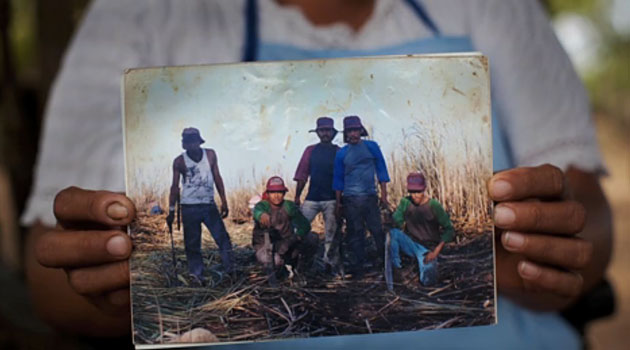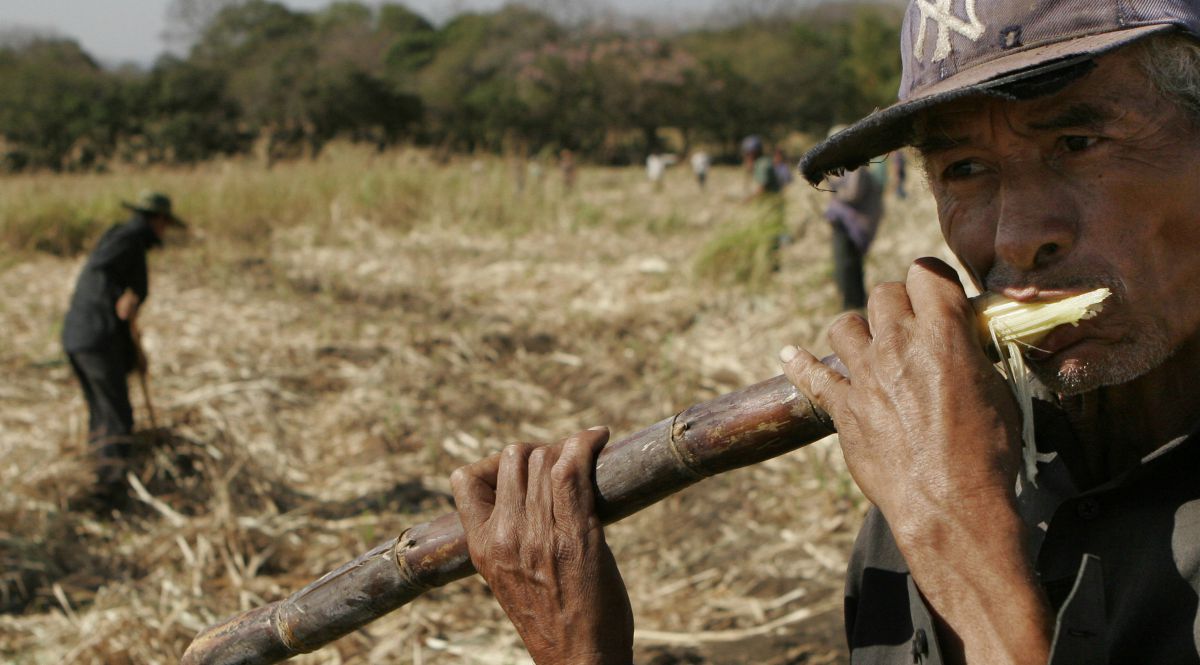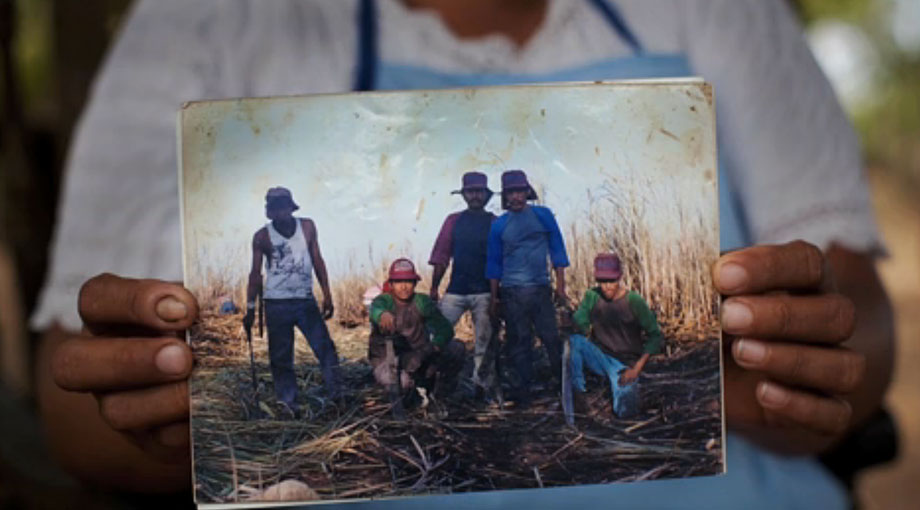SAN SALVADOR, El Salvador — Bringing new urgency to a mysterious kidney disease afflicting the region’s agricultural laborers, Central America’s health ministries signed a declaration Friday citing the ailment as a top public health priority and committing to a series of steps to combat its reach.
Over the last two years, the Center for Public Integrity has examined how a rare type of chronic kidney disease (CKD) is killing thousands of agricultural workers along Central America’s Pacific Coast, as well as in Sri Lanka and India. Scientists have yet to definitively uncover the cause of the malady, although emerging evidence points to toxic heavy metals contained in pesticides as a potential culprit.
Following years of official inaction in the U.S. and beyond, Friday’s San Salvador declaration — for the first time — formally recognized the disease and its unique characteristics.
“This disease fundamentally affects socially vulnerable groups of agricultural communities along the Pacific Coast of Central America, predominates among young men, and has been associated with conditions including toxic environmental and occupational risk factors, dehydration, and habits that are damaging to renal health,” said the declaration adopted by the Council of Health Ministers of Central America.
The ministers pledged potentially meaningful new steps, including more detailed statistical tracking of CKD, the development of national and regional plans to investigate and treat the disease, and promotion of stronger regulation of agrochemicals.
The declaration represented a major victory for El Salvador and its health minister, Dr. Maria Isabel Rodriguez. Ninety years old and barely five feet tall, peering from behind enormous eyeglasses, Rodriguez has been a driving force behind catapulting the ailment from obscurity to formal recognition as a leading regional threat.
“This is a disease of poor people,” Rodriguez said. “This is a disease of people who work in the fields and have very bad living conditions.”
The outcome signaled a turnaround by the U.S. Centers for Disease Control and Prevention, which in 2011 helped beat back an effort by El Salvador to declare the malady a top priority for the Americas. The CDC now says it has devoted “several hundred thousand” dollars to support research of the disease, created a multidisciplinary internal task force on chronic kidney disease in Central America, and pledged to help fund a national survey by El Salvador to measure the prevalence of chronic ailments including CKD.
“We have that commitment to provide the support to follow and strengthen their investigations in the ministries of health,” said Dr. Nelson Arboleda, the CDC’s director for Central American Region.
The San Salvador conference also marked a threshold in international cooperation in combating the mysterious disease. Following years in which researchers battling parallel epidemics in Central America, Sri Lanka and India failed to compare results, Sri Lanka sent an official delegation to El Salvador and urged Central America to consider its research findings and policy responses as a model for future action.
“We are having enough clinical, biochemical and histopathological evidence to say this is the same disease,” said Channa Jayasumana, Sri Lanka’s delegate in El Salvador.
The disease has felled thousands. In Sri Lanka, more than 8,000 patients are receiving treatment for CKD of unknown cause, an official report found, a figure representing just a fraction of those affected by a disease that remains latent until its advanced stages. More than 16,000 men died of kidney failure in Central America from 2005 to 2009, with annual deaths increasing more than threefold since 1990, according to an analysis of World Health Organization data. In El Salvador, CKD has become the leading cause of hospital deaths among adult men.
The Debate over Pesticides
Although the declaration reflected broad agreement to take action, the two-day conference that preceded its signing was dominated by a forceful debate. The central question: whether there was adequate evidence to declare the disease is linked to agrochemicals and respond by restricting their use.
At the conference, El Salvador presented findings from an ongoing official study, conducted jointly with the Pan American Health Organization, suggesting that pesticides and fertilizers containing heavy metals may be to blame. Environmental tests of soil and water samples in a village heavily affected by CKD, Ciudad Romero, found the presence of high levels of cadmium and arsenic, heavy metals toxic to the kidneys. Among a sample of 42 residents of Ciudad Romero who suffer from CKD, all reported applying pesticides without any protective equipment.
A national sample of 46 CKD patients found that 96% reported using pesticides, and medical tests of these patients revealed additional symptoms such as impaired reflexes and damage to arteries in the lower limbs that suggest toxic poisoning.
El Salvador’s findings echo those in Sri Lanka. An official study there, conducted by the Sri Lankan health ministry in partnership with the World Health Organization, documented elevated levels of cadmium and arsenic contained in agrochemicals and within environmental samples from the endemic region — and found the same heavy metals in samples of urine, hair and nails of patients. Sri Lanka also found residues of several pesticides in the urine of many of the affected patients.
Since the publication of its report, the Sri Lankan government has imposed a ban on four common pesticides from use in the endemic region. Rodriguez, El Salvador’s health minister, said she also hopes to ban pesticides that are potentially linked to the epidemic.
Yet other researchers questioned the weight of evidence pointing to pesticides. El Salvador found arsenic above permitted levels in one location in Ciudad Romero and cadmium above permitted levels in another location in the same village — hardly proof of widespread contamination, critics say. The nation also has yet to complete toxicology tests that will determine whether the heavy metals came from pesticides, or whether heavy metals and pesticide residues appeared in blood, urine, or tissue samples of CKD patients.
Basic questions about the pesticide hypothesis remain unanswered in both El Salvador and Sri Lanka’s reports, including evidence of how the agrochemicals are entering victims’ bodies or what products are at fault. Despite the dramatic parallel findings from the recently released reports, no peer-reviewed studies in more than a decade of research have established a definitive link to agrochemicals.
“There is still no direct causal connection,” said Dr. Ramon Trabanino, a Salvadorean nephrologist who published two of the first studies demonstrating the presence of the disease. “I think all of this is political. They want something to blame.”
The controversy came to head in the final portion of the scientific conference. The argument pitted skeptics of the evidence against conference organizers who argued that the Sri Lankan and Salvadorean results were clear enough to create a moral obligation to take precautionary action. The debate was concluded by Rodriguez, who delivered a forceful defense of El Salvador’s findings.
“What has been presented here is scientific fact, and I will defend it with my nails,” she said, holding up bright red-painted fingernails and reducing the room to laughter.
Chemicals in the Spotlight
Two chemicals in particular have come into investigators’ crosshairs in both El Salvador and Sri Lanka: 2,4-D and glyphosate. 2,4-D is a common herbicide used to control weeds, and glyphosate is the active ingredient in the world’s most popular herbicide, Roundup. Both are used worldwide, including in countless areas not affected by this distinctive form of chronic kidney disease.
The El Salvador sample of CKD patients from Ciudad Romero — the community shown to be contaminated by heavy metals — found that 100 percent and 75 percent of the patients, respectively, reported using 2,4-D and glyphosate. In Sri Lanka, both are used heavily and were found in urine samples of some sick patients.
Glyphosate was developed by Monsanto, but the patent has expired so numerous companies now sell glyphosate products. Monsanto said it currently sells glyphosate products in Sri Lanka but did not confirm whether it sells such products in Central America.
Dr. Daniel Goldstein, a Senior Science Fellow at Monsanto, said “glyphosate does not cause renal failure.” He said he was aware of the official findings from Sri Lanka, and that glyphosate contains phosphorus, an element whose molecular similarity to arsenic can result in small amounts of arsenic byproduct in quantities not threatening to human health. But the “plausibility of relationship is virtually nil” between glyphosate and the Sri Lankan kidney disease epidemic, Goldstein said.
Dow Chemicals, which developed 2,4-D, did not respond to requests for comment. Like glyphosate, the patent on production has expired and other companies also produce pesticides containing 2,4-D.
According to the Environmental Protection Agency, excessive quantities of glyphosate and 2,4-D in drinking water can cause damage to the kidneys. But little research has been conducted into other types of exposures, and particularly on long-term health effects on humans.
“I’m appalled at how little [research] there is on humans,” said Dr. Stephanie Seneff, a Senior Research Scientist at the Massachusetts Institute of Technology. Seneff published a study last week raising concerns about a variety of potential health effects from long-term exposure to glyphosate.
Scientists from the Salvadorean and Sri Lankan research teams also suspect that toxic additives to pesticides, or dangerous combinations of chemicals, may pose health risks additional to those presented by the products themselves.
In an interview in San Salvador, Rodriguez reacted with surprise to Monsanto’s position that glyphosate does not threaten the kidneys.
“Ah, Monsanto!” she said, a look of consternation crossing her face. “They are the ones that will be fighting us.”
Support for this report was provided by the Stabile Center for Investigative Journalism at Columbia University.



